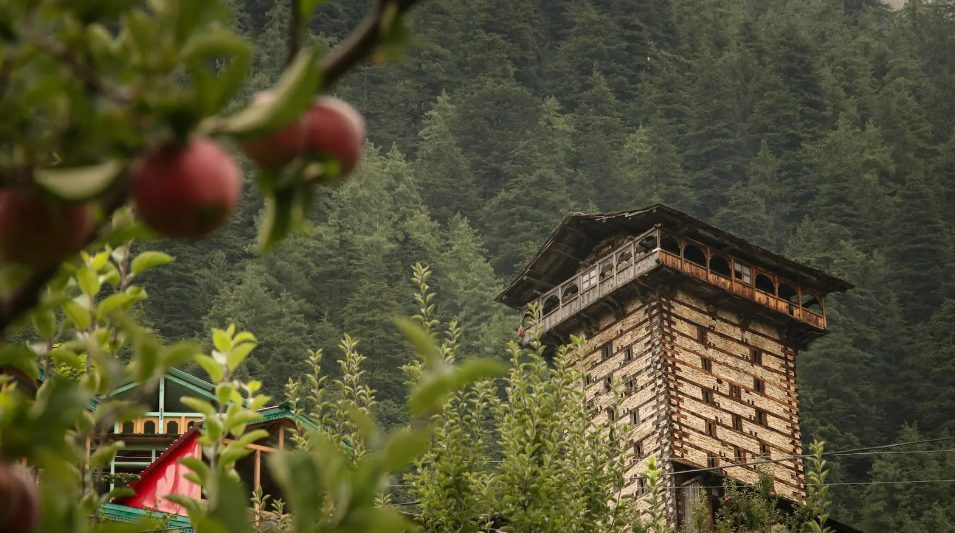
©BBC News, Tarang Mohnot
Vocabulary:
I will read the words, meanings, and sample sentences. Then, repeat after me.
- local /LOH-kuhl /
- residence /REZ-i-duhns/
- astounded /uh-STOUND/
- exquisite /ik-SKWIZ-it/
- hand down /hand down/
[noun] – a person who lives in the particular small area that you are talking about
The restaurant is popular with both locals and visitors.
[noun] – a home
The emperor was in residence at his summer palace.
[adjective] – very surprised or shocked
I was astounded by the beauty of the building.
[adjective] – very beautiful and delicate
Her wedding dress was absolutely exquisite.
[phrasal verb] – to give something to someone younger than you in the family because you want them to have it or because you no longer need it
The house was handed down to my elder brother.
Article reading:
Please read the whole article. Then, I will check your pronunciation and intonation.
Locals in a series of Himalayan towns known for severe earthquakes maintain a millennia-old building style.
In 1905, Himachal Pradesh, an Indian state in the western Himalayas, experienced a fatal earthquake. Concrete structures that appeared to be sturdy collapsed like houses of cards. The only buildings that survived were found in places where people used the traditional, age-old building method known as kath kuni in the Himalayas. After that disaster, Naggar Castle, which was constructed more than 500 years ago as the residence of the region’s strong Kullu monarchs, stood unharmed. The castle and other kath kuni homes within the quake’s radius did not suffer any seismic damage, which astounded officers from the Geological Survey of India. Although the castle is one of the most exquisite surviving specimens of the architectural type, kath kuni dwellings have been built in this area for a very long time. The design can be identified by the way that native stone and a species of Himalayan cedar called deodar are interlocked in layers without the use of mortar. Although Naggar Castle is now a hotel and a popular tourist destination, its rustic walls, which are made of flat-stacked grey stones and earth-toned wood planks, are a testament to the fact that some things are timeless.
The construction method has been handed down through the ages. However, the custom is fading as concrete dwellings with flat roofs gain popularity in many areas. Many people are making desperate attempts to protect their identity by covering their concrete homes with stone tiles and wood-finish wallpaper since the raw ingredients for kath kuni have been harder to find and more expensive.
In 1905, Himachal Pradesh, an Indian state in the western Himalayas, experienced a fatal earthquake. Concrete structures that appeared to be sturdy collapsed like houses of cards. The only buildings that survived were found in places where people used the traditional, age-old building method known as kath kuni in the Himalayas. After that disaster, Naggar Castle, which was constructed more than 500 years ago as the residence of the region’s strong Kullu monarchs, stood unharmed. The castle and other kath kuni homes within the quake’s radius did not suffer any seismic damage, which astounded officers from the Geological Survey of India. Although the castle is one of the most exquisite surviving specimens of the architectural type, kath kuni dwellings have been built in this area for a very long time. The design can be identified by the way that native stone and a species of Himalayan cedar called deodar are interlocked in layers without the use of mortar. Although Naggar Castle is now a hotel and a popular tourist destination, its rustic walls, which are made of flat-stacked grey stones and earth-toned wood planks, are a testament to the fact that some things are timeless.
The construction method has been handed down through the ages. However, the custom is fading as concrete dwellings with flat roofs gain popularity in many areas. Many people are making desperate attempts to protect their identity by covering their concrete homes with stone tiles and wood-finish wallpaper since the raw ingredients for kath kuni have been harder to find and more expensive.
Discussion Questions:
I will read each question. Then, please answer them.
- Have you experienced an earthquake? If so, could you tell me about it? If not, could you tell me what to do during an earthquake?
- Could you tell me about earthquake-proof buildings in your country?
- Would you like to have an earthquake-proof house like Naggar Castle? Why or why not?
- Do you believe that kath kuni is timeless?
- Do you think the ancient earthquake-resilient design of the Himalayas will last forever? Why or why not?
Summarization
Please summarize the whole article using your own words and expressions. You will have one minute to prepare before you answer.
Describe:
Please explain the definition of each word listed below based on your understanding. You can provide example sentences if needed.
- severe
- style
- state
- tourist destination
- testament